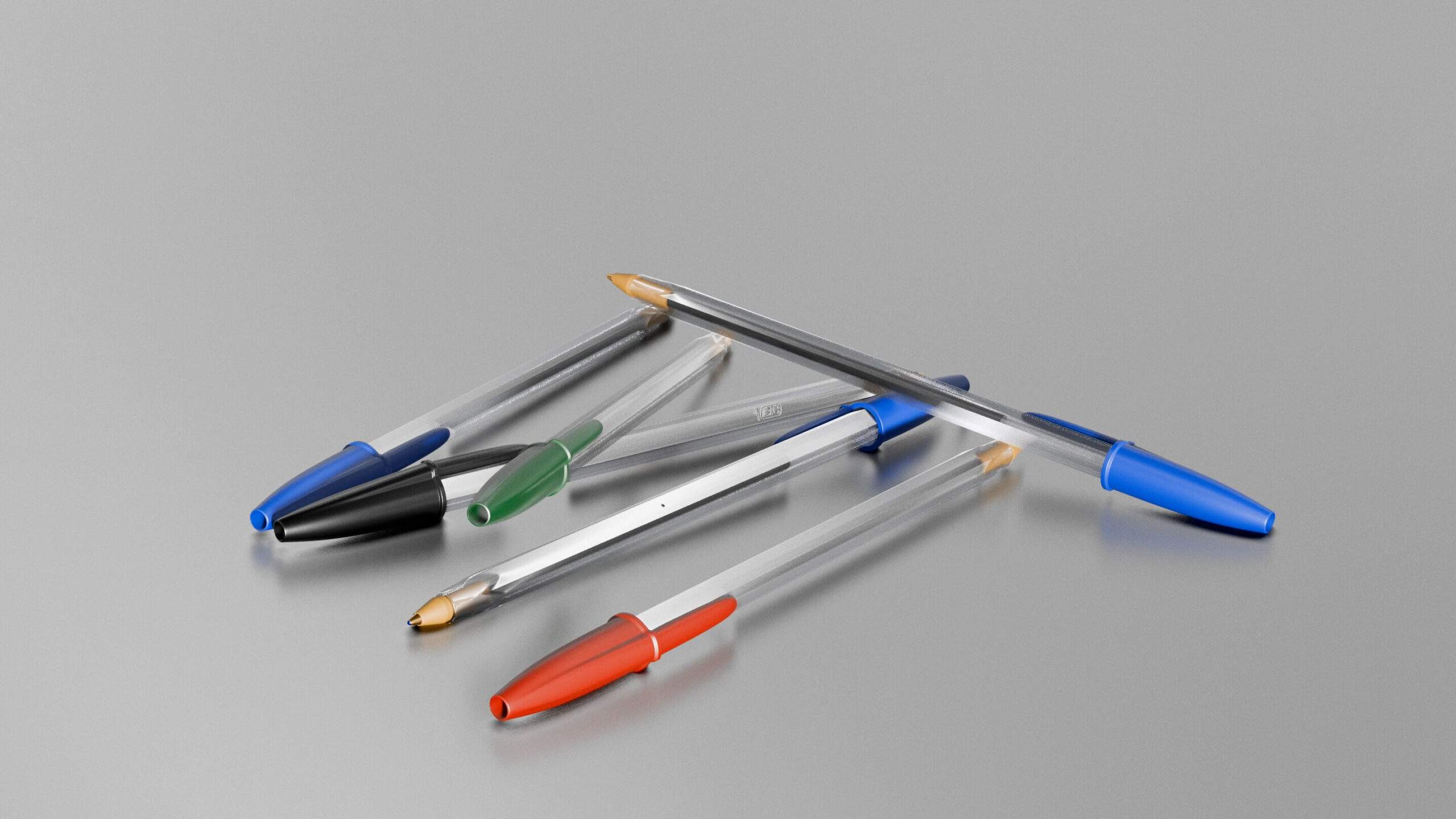History
In 1945, Marcel Bich and Édouard Buffard established Société PPA (Porte-plume, Porte-mines et Accessoires) in Clichy, France, initially producing pen holders and mechanical pencils. Recognizing the potential of the ballpoint pen, which was invented by László Bíró but had yet to achieve widespread success, Bich acquired the patent rights and refined the design to create a reliable and affordable writing instrument. In December 1950, the Bic Cristal was launched, featuring a hexagonal barrel inspired by the traditional wooden pencil and a transparent body to display the ink level. This design quickly gained popularity, leading to the company's rebranding as Société Bic in 1953. (corporate.bic.com)
Design and Features
The Bic Cristal's design includes a tungsten carbide ballpoint tip that ensures smooth ink flow and durability. Its hexagonal shape prevents rolling and provides a comfortable grip. The pen's transparent polystyrene barrel allows users to monitor ink levels, while a small hole in the barrel maintains equal air pressure inside and outside the pen. Over the years, Bic has introduced various models, including the Bic Orange with a fine 0.8mm point and an orange barrel, and the Bic 4-Color pen, which offers multiple ink colors in a single pen. (en.wikipedia.org)
Manufacturing and Global Reach
Bic pens are manufactured in numerous facilities worldwide, ensuring consistent quality and availability. The company's commitment to affordability and reliability has made Bic pens ubiquitous in schools, offices, and homes globally. As of 2006, over 100 billion Bic Cristal pens had been sold, solidifying its status as the world's best-selling pen. (en.wikipedia.org)
Environmental Initiatives
In recent years, Bic has focused on sustainability by introducing eco-friendly product lines such as Bic ReVolution, which features pens made from at least 50% recycled plastic. The company has also committed to using 100% recycled materials in its packaging by 2025 and aims for its products to contain 50% non-virgin plastic by 2030. (en.wikipedia.org)
Cultural Impact
The Bic Cristal's design has been recognized by institutions like the Museum of Modern Art in New York, where it is part of the permanent collection. Its simplicity and functionality have made it a cultural icon, symbolizing accessible design and everyday utility. (en.wikipedia.org)
